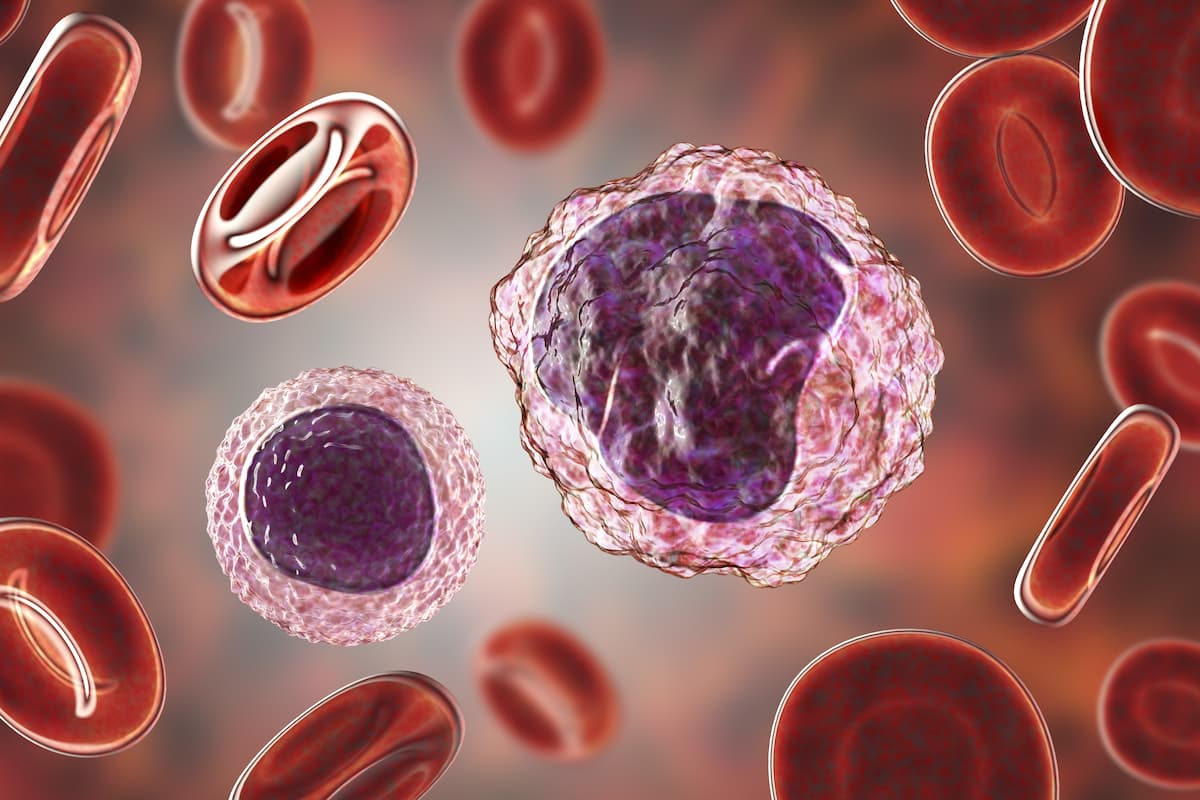Nanatinostat Combo Yields Responses in R/R EBV+ Peripheral T-Cell Lymphoma
Phase 2 findings support nana-val as a promising treatment option for those with EBV-positive peripheral T-cell lymphoma.
"Nana-val is emerging as a promising, generally well-tolerated, convenient all-oral treatment for patients with relapsed or refractory EBV-positive PTCL," according to Hung Chang, MD.

Combining nanatinostat with valganciclovir (Valcyte; nana-val) elicited clinical responses in a small cohort of patients with relapsed or refractory Epstein-Barr virus (EBV)–positive peripheral T-cell lymphoma (PTCL), according to findings from the phase 2 NAVAL-1 trial (NCT05011058) presented at the 2024 Joint Annual Congress of Taiwan Society of Blood and Marrow Transplantation and The Hematology Society of Taiwan.1
As of the data cutoff date of February 7, 2024, in the intent-to-treat (ITT) population, nana-val yielded an objective response rate (ORR) of 50% (n = 5/10) and a complete response (CR) rate of 20% (n = 2/10). The corresponding rates among those who received nanatinostat alone were 10% (n = 1/10) and 0% (n = 0/10).
Across the efficacy-evaluable population of the trial, the ORR and CR rate was 71% (n = 5/7) and 29% (n = 2/7), respectively, among patients who received nana-val. Additionally, the ORR with nanatinostat monotherapy was 13% (n = 1/8), and the CR rate was 0% (n = 0/8).
Investigators reported a response with nana-val in one patient with relapsed/refractory EBV-positive PTCL and axillary, retroperitoneal, inguinal, and pelvic lymphadenopathy at 16 weeks who proceeded to allogeneic stem cell transplant. The response in this patient remained ongoing per radiographic follow-up at 260 days following the initial response to nana-val.
Any-grade treatment-related adverse effects (TRAEs) in the nana-val and nanatinostat monotherapy arms, respectively, included platelet count decreases (20.0% vs 10.0%), anemia (10.0% vs 50.0%), fatigue (10.0% vs 30.0%), and decreased appetite (10.0% vs 30.0%). Grade 3/4 toxicity included decreased platelet counts in 1 patient and diarrhea in another patient in the nana-val arm as well as anemia in 4 patients who received nanatinostat monotherapy.
“Nana-val demonstrated an impressive clinical response in patients with relapsed or refractory EBV-positive PTCL with a generally manageable safety profile, including 1 patient who was able to proceed to allogeneic stem-cell transplant and remains in response for over 8 months to date,” principal investigator Hung Chang, MD, a professor of Hematology, Linkou Chang Gung Memorial Hospital, Chang Gung University College of Medicine, Taoyuan, Taiwan, said in a press release on these findings.2
“The substantially greater clinical efficacy of nana-val relative to nanatinostat monotherapy suggests that both agents in the combination regimen are contributing to its anti-tumor activity as predicted by their mechanisms of action. Nana-val is emerging as a promising, generally well-tolerated, convenient all-oral treatment for patients with relapsed or refractory EBV-positive PTCL,” he added.
In stage 1 of the NAVAL-1 trial, patients were randomly assigned to receive combination therapy with nana-val (n = 10) or nanatinostat monotherapy (n = 10). Stage 2 of the trial is planned to include a combination expansion cohort in which 11 patients will receive nana-val, while those who do not respond to nanatinostat monotherapy at week 6 will be eligible to cross over to receive combination therapy.
The trial’s primary end points are ORR by independent central review and the potential to further expand indications with promising anti-tumor activity after stage 2. Patients with relapsed/refractory EBV-positive lymphoma with at least 1 prior line of therapy and no curative options are eligible for inclusion in the study.
As of the data cutoff, the median patient age was 69 years (range, 47-78). Additionally, most patients were male (n = 16) and had an ECOG performance status of 1 (n = 14). The majority of patients were White (50%) and had stage III or IV disease (75%).
“We look forward to engaging with the FDA on a potential accelerated approval pathway midyear and sharing topline results from stage 2 together with additional data from stage 1 in the third quarter of 2024,” Darrel P. Cohen, MD, PhD, chief medical officer at Viracta Therapeutics, said.2
References
- Chang H, Hsiao HH, Chen TY, et al. A global phase 2 trial of nanatinostat in combination with valganciclovir in patients with EBV-positive (EBV+) relapsed/refractory peripheral T-cell lymphomas (NAVAL-1). Presented at the 2024 Joint Annual Congress of Taiwan Society of Blood and Marrow Transplantation and The Hematology Society of Taiwan; April 13-14, 2024; Kaohsiung, Taiwan.
- Viracta Therapeutics announces positive topline nana-val results from stage 1 of the NAVAL-1 trial in patients with relapsed or refractory Epstein-Barr virus-positive (EBV+) peripheral T-cell lymphoma. News release. Viracta Therapeutics, Inc. April 15, 2024. Accessed April 17, 2024. https://tinyurl.com/fxuy9f3b
Newsletter
Stay up to date on recent advances in the multidisciplinary approach to cancer.
Highlighting Insights From the Marginal Zone Lymphoma Workshop
Clinicians outline the significance of the MZL Workshop, where a gathering of international experts in the field discussed updates in the disease state.